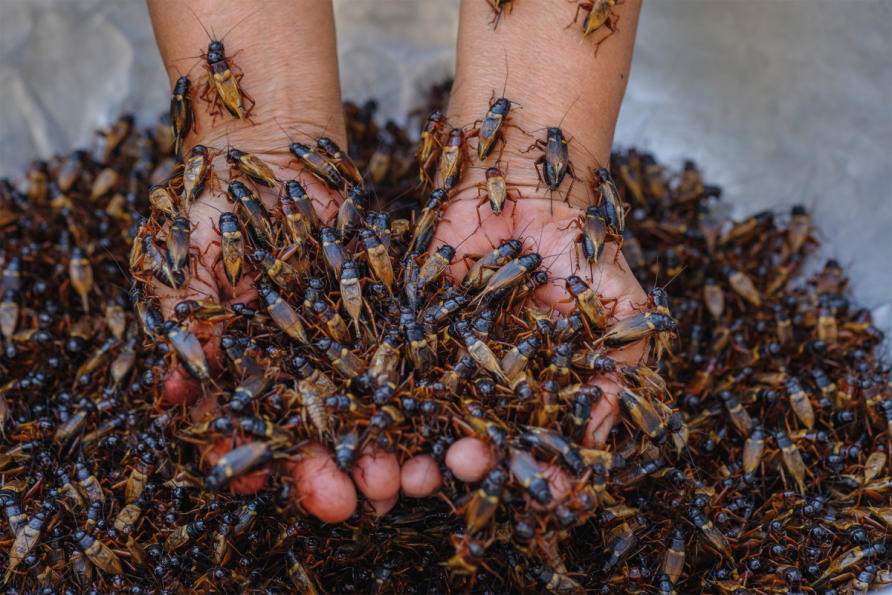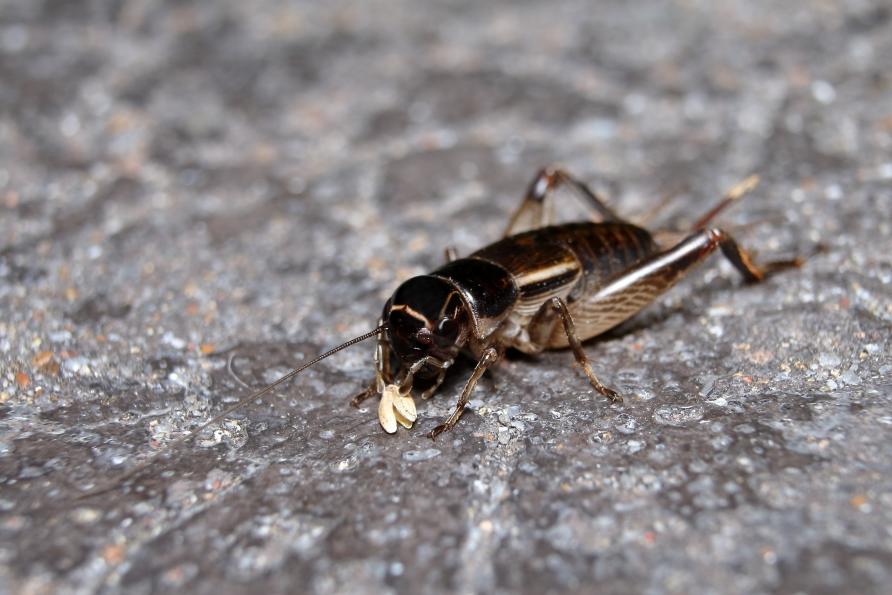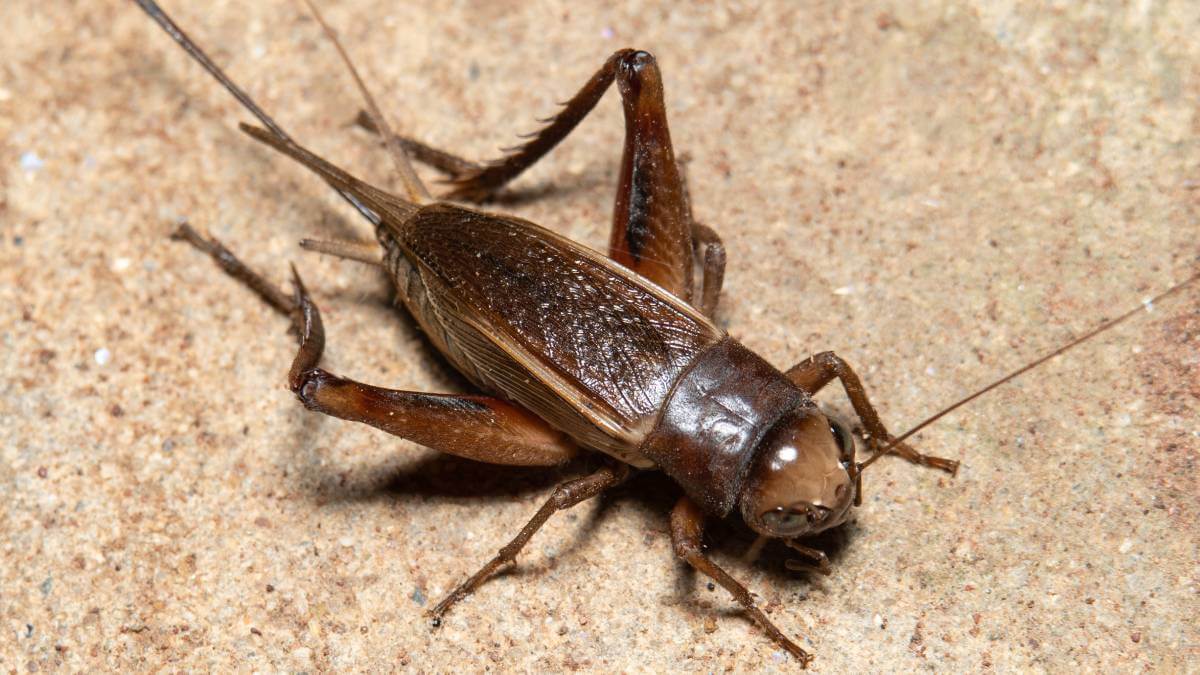From Reservoir to Fitzroy, social media has been abuzz that parts of Melbourne are being overrun by crickets.
The native Australian insect may be small, but it can make a whole lot of noise – something your ears might be recovering from if you live in one of the suburbs the black field cricket is temporarily calling home.
To find out exactly what’s going on, we asked entomologist and evolutionary biologist Professor Ary Hoffmann for his expert analysis.
The 10 plagues of Victoria?
Darkness, floods, fires, now…crickets. https://t.co/MjhIuSxhHj— Misinformation Fact Checker 🐬 #FactsMatter (@MisinfoFact) February 14, 2024
Why is there an infestation of crickets and other insects in Melbourne at the moment?
Every insect is different and can cause infestations at different times.
What we’re seeing now are Teleogryllus commodus (or black field crickets), and they’re always present in Melbourne. They live in the roots and plant matter in your lawn, and they come out at certain times of the year as part of their natural cycle.
We’re seeing a lot because we’ve had a very good season.
We’ve also had a massive invasion of mosquitoes and an abundance of midges, and that’s all related to the fact that we’re getting these big rainfall events.
Insects are very good at taking advantage of climatic events that favour them.
Many insects are what we call boom-and-bust animals. So now we have the crickets taking advantage of a boom cycle.
People use the word ‘plague’, but I think that’s an inappropriate word for this particular outbreak.
It’s really just a natural population doing quite well for itself, but it’s not a plague. It’s not something that’s going to reach epic proportions and we’re not going to see massive damage around the place.

Are crickets harmful to humans?
Not at all – these crickets are completely harmless, they don’t bite and they don’t hack into the woodwork in your house.
They are vegetarians and eat all sorts of plant materials including roots, leaves and shoots. They have these wonderful mouths that they use to chomp on plant material.
And they are not cockroaches.
Crickets don’t spread disease like mosquitoes or a few other insects. Some people even keep them as pets.
In some countries and cultures people eat crickets, as they are protein rich – though I’m not advising you to do that with the crickets in your backyard.
If I find a cricket indoors, what should I do?
Look at it – they’re beautiful animals. Feel free to pick them up – or you can put them in a bucket and drop them outside.
They are nocturnal and attracted to light, so you’ll notice them flying into people’s homes and buildings at night.
I’d hate to see a situation where people start to fog their houses with pesticides to try to get the crickets out. You don’t need to exterminate these things, they’re always going to be around.
Once they finish breeding and it cools down, they’ll become less active again and people will stop noticing them.
Is this related to locust plagues?
No. Locusts are migratory animals; these black field crickets are resident animals that are always present, and that’s a huge difference.

The crickets are Melburnians, they are native. You have birds that hang around in your yards, and you’ve also got some insects that hang around your yard.
It’s just part of our urban biodiversity.
Also, we have a very good predictive system of locust flights in Australia, and it does not look like there are going to be any big flights in the next few months.
How important are crickets to our biodiversity?
Crickets and grasshoppers are very important – they provide food for our birds and lizards. They also provide food for other types of insects and there are even some small mammals that rely on crickets as a food source.
It’s very important to see crickets as part of our natural diversity, especially in urban areas where we have a vastly reduced biodiversity – and that’s a great shame.
We’ve lost a lot of insects over time. We don’t have the big Christmas Beetle invasions anymore. So I think people should value and embrace these healthy populations when they show up.
I think these ‘booms’ are good news – except when it comes to disease carrying mosquitoes. We want to avoid those.

Is the fact we notice these ‘swarms’ an indication of dwindling insect populations?
We used to see a lot of insects, but now as other insects disappear, these swarms seem out of the ordinary. People in Melbourne have commented they don’t see as many insects on their windscreens or moths around streetlights.
We’re creating a sterile environment for our insects and that sterile environment is really our problem.
Both in Australia and around the world, we’re very concerned about the decrease in general insect populations. There’s lots of evidence accumulating that we are starting to lose species and numbers and as a consequence, other animals like birds and lizards are in a bit of trouble.
It’s kind of scary actually, because in some places, particularly documented overseas, there’s evidence that we might have lost half of our insects, or even two-thirds of particular types of insects.
Regarding our current cricket visitors, we shouldn’t worry about outbreaks of native insects going through natural cycles.
What we need to do is worry about the fact that we don’t see a lot of them anymore. That’s the real problem.
This article was first published on Pursuit. Read the original article.
Have you noticed any increase in the amount of bugs around your home? Why not share your experience in the comments section below?
Also read: How insects are eaten around the world


